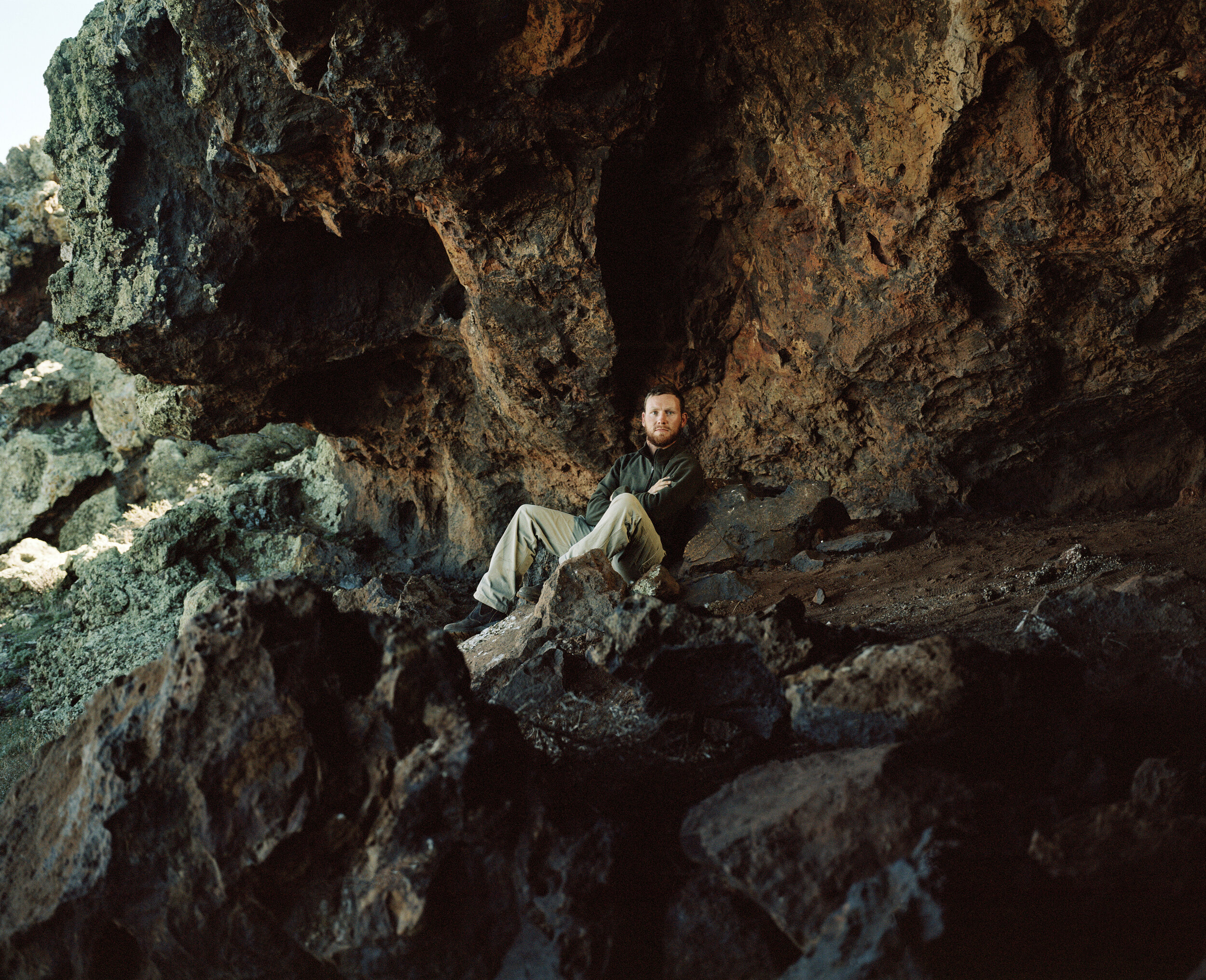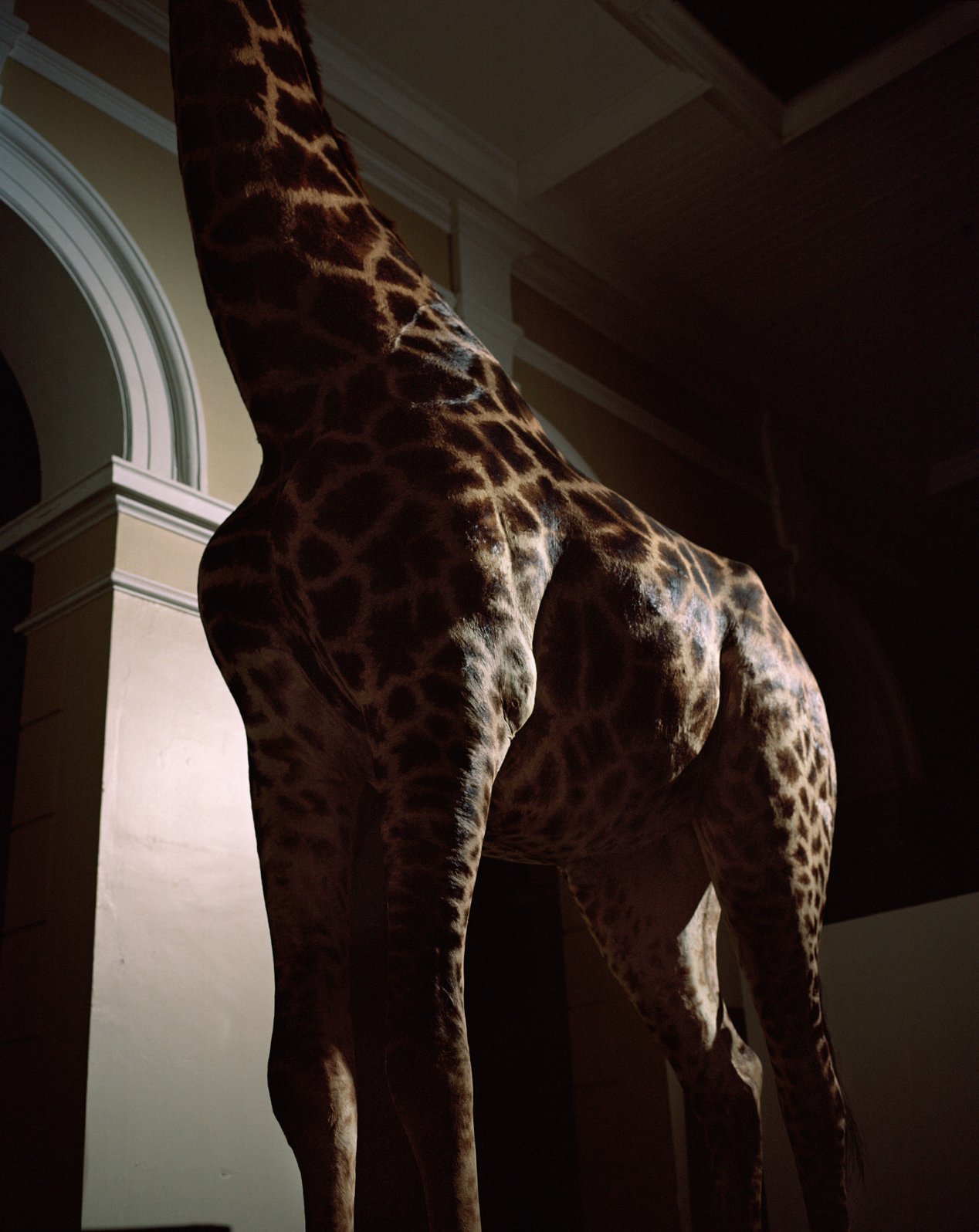’You have to be devoted, I’m basically outside every night. I meet so many people, and it gives me a reward - when people say they enjoyed it. Lastly I would say you learn how insignificant we are in the greater universe and it makes you feel humble - that is the way I want to look at it every night. If you look at the whole concept, I have to agree that it is not only our world - it is such a vast area, it is a never ending story… where do you stop, where do you begin? Once again it makes you feel very humble.’
Jurg Wagener, Star Gazer
Read MoreKoppies are small hills - often cultivating a very specific combination of plants - facilitating a micro eco-system by giving shade and shelter for all kinds of creatures - often resulting in a very different appearance and make up to the surrounding valleys or neighbouring mountains.
Read MoreThe thing is we observe most of our targets for other people, so we don’t really know exactly what they are. We sort of understand a little bit. My job is mostly to make sure that they get their data properly, but their science reasoning is not my specialisation.
Read MoreOur consideration of what is large and what is small is constantly provoked as we experience the many details of the landscape. Even then as we use ourselves as a type of scale and our bodies are in turn observed by the landscape - it all becomes a loop of relativity. From the mere thought of what we consider the smallest atomic parts to the imagining of other distant heavenly bodies without measure.
Read More‘The study on the response of cells to neutron irradiation is a crucial aspect for the feasibility of future human mission in space.’
Read MoreDr Charlot Vandevoorde is positioning the wooden table where the biological sample will be place for a neutron beam irradiation. The study on the response of cells to neutron irradiation is a crucial aspect for the feasibility of future human mission in space.
Read MoreThe old Van de Graaff accelerator, now substituted with a new Tandetron accelerator, is manly used for materials research such as nano-structures or composite materials studies.
Read More‘…“No,” the professor murmurs disdainfully. “No, I believe it comes in peace. No, the lines are too harmonious to be designed by devils.”
…Then the automatic outer door closes quickly behind him. While groups of men in the glass dome stares out anxiously into the ice night where the flying saucer with an unearthly glow sits dead still on the runway, and dr. Eva Stellaris also stands without motion in front if the foot thick window, the lonely figure of professor Mertyn moved closer to the cosmic visitor.’
Photograph inspired by ‘Swart ster oor die Karoo’ (Black star over the Karoo) by Jan Rabie, 1957. Translated from the original Afrikaans. The characters encounter a constant tension between the expectation of fear and violence and peaceful curiosity towards their visitors.
Read More‘This is where the interaction between the charged particles of the beam and the target nuclei take place. From the analysis of the reaction products it is possible to understand nuclear structure properties and interaction principles.’
—
'In other words, it's a place where we try to reproduce stars in a laboratory - stars are the place where there is a high density of protons, neutrons and from this high density, there are collisions that are going to create heavier elements. So this is what we are trying to do now, we are trying to reproduce what happens in stars, in the laboratory.'
Dr. Faïçal Azaiez, Director at iThemba LABS, Laboratory for Accelerator-Based Sciences.
Read More”…we know that have lost contact with the Earth, and that the Sun became invisible behind us. But just in this moment lieutenant Viljee’s observations proved that we are not at the height of Uranus - but that of Jupiter! Still at 140,000km but it is so big that we can observe it’s horizon, even the famous red circle on it’s surface. This means we are busy flying inwards into the solar system - in other words, back to the Earth.“
Series inspired by ‘Swart ster oor die Karoo’ (Black star over the Karoo) by Jan Rabie, 1957. Sci-fi Novel about a future human race that has to live in a solar system where the Sun has gone dark. Translated from Afrikaans to English.
Read More”…we know that have lost contact with the Earth, and that the Sun became invisible behind us. But just in this moment lieutenant Viljee’s observations proved that we are not at the height of Uranus - but that of Jupiter! Still at 140,000km but it is so big that we can observe it’s horizon, even the famous red circle on it’s surface. This means we are busy flying inwards into the solar system - in other words, back to the Earth.“
Series inspired by ‘Swart ster oor die Karoo’ (Black star over the Karoo) by Jan Rabie, 1957. Sci-fi Novel about a future human race that has to live in a solar system where the Sun has gone dark. Translated from Afrikaans to English.
Read More”…we know that have lost contact with the Earth, and that the Sun became invisible behind us. But just in this moment lieutenant Viljee’s observations proved that we are not at the height of Uranus - but that of Jupiter! Still at 140,000km but it is so big that we can observe it’s horizon, even the famous red circle on it’s surface. This means we are busy flying inwards into the solar system - in other words, back to the Earth.“
Series inspired by ‘Swart ster oor die Karoo’ (Black star over the Karoo) by Jan Rabie, 1957. Sci-fi Novel about a future human race that has to live in a solar system where the Sun has gone dark. Translated from Afrikaans to English.
Read More”…we know that have lost contact with the Earth, and that the Sun became invisible behind us. But just in this moment lieutenant Viljee’s observations proved that we are not at the height of Uranus - but that of Jupiter! Still at 140,000km but it is so big that we can observe it’s horizon, even the famous red circle on it’s surface. This means we are busy flying inwards into the solar system - in other words, back to the Earth.“
Series inspired by ‘Swart ster oor die Karoo’ (Black star over the Karoo) by Jan Rabie, 1957. Sci-fi Novel about a future human race that has to live in a solar system where the Sun has gone dark. Translated from Afrikaans to English.
Read More”…we know that have lost contact with the Earth, and that the Sun became invisible behind us. But just in this moment lieutenant Viljee’s observations proved that we are not at the height of Uranus - but that of Jupiter! Still at 140,000km but it is so big that we can observe it’s horizon, even the famous red circle on it’s surface. This means we are busy flying inwards into the solar system - in other words, back to the Earth.“
Series inspired by ‘Swart ster oor die Karoo’ (Black star over the Karoo) by Jan Rabie, 1957. Sci-fi Novel about a future human race that has to live in a solar system where the Sun has gone dark. Translated from Afrikaans to English.
Read More”…we know that have lost contact with the Earth, and that the Sun became invisible behind us. But just in this moment lieutenant Viljee’s observations proved that we are not at the height of Uranus - but that of Jupiter! Still at 140,000km but it is so big that we can observe it’s horizon, even the famous red circle on it’s surface. This means we are busy flying inwards into the solar system - in other words, back to the Earth.“
Series inspired by ‘Swart ster oor die Karoo’ (Black star over the Karoo) by Jan Rabie, 1957. Sci-fi Novel about a future human race that has to live in a solar system where the Sun has gone dark. Translated from Afrikaans to English.
Read MoreThis giraffe was at the entrance, in the first room of the (Chapter One) exhibition. Most visitors, especially children were spellbound and immediately attracted by it’s sheer size and magnificence. We started referring to it as ‘God’ after a while - soon realising that there is no competition or comparison to the presence of this tall, impressive yet comical creature.
Read More‘You don't always have to look for something because it is useful for the next day. It's like for the sake of knowledge..."
‘BaGel (Ball of Germanium and LaBr) It is used to detect the de-excitation radiation (gamma rays) from nuclei excited via nuclear reactions. Nuclear structure studies have important impact in the understanding of astrophysical phenomena such as the dynamics of neutron starts and the production of heavy elements in the universe.’
Dr. Luna Pellegri, Senior Researcher, iThemba LABS
Read More‘…“No,” the professor murmurs disdainfully. “No, I believe it comes in peace. No, the lines are too harmonious to be designed by devils.”
…Then the automatic outer door closes quickly behind him. While groups of men in the glass dome stares out anxiously into the ice night where the flying saucer with an unearthly glow sits dead still on the runway, and dr. Eva Stellaris also stands without motion in front if the foot thick window, the lonely figure of professor Mertyn moved closer to the cosmic visitor.’
Photograph inspired by ‘Swart ster oor die Karoo’ (Black star over the Karoo) by Jan Rabie, 1957. Translated from the original Afrikaans. The characters encounter a constant tension between the expectation of fear and violence and peaceful curiosity towards their visitors.
Read More










